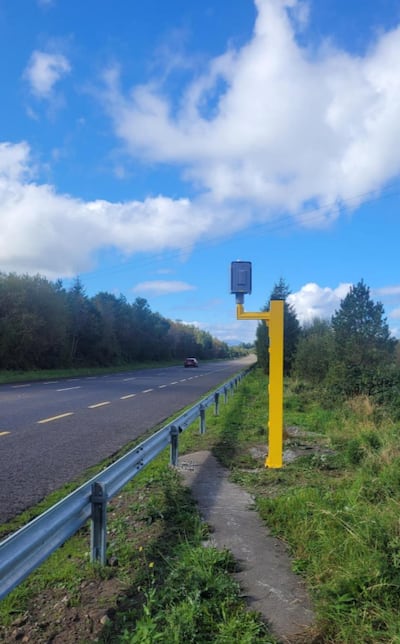Two new average speed safety cameras have been installed on the N3 in Co Cavan and the N5 in Co Mayo.
Average safety cameras systems monitor a vehicle’s speed over a certain distance. These systems differ to static safety camera detections, which measures a motorist’s speed at a single point.
An Garda Síochána said that the N3 and N5 sites were chosen as they are “high collision sites with numerous road traffic collisions, involving injury, serious injury and fatalities”.
While the camera systems have been installed, they will not be operational for several weeks to allow for commissioning, testing and validation.
READ MORE
On the N5, the cameras have been installed between Lislackagh and Cuilmore, Swinford. On the N3, the cameras are located between Kilduff and Billis.
The cameras will use Automatic Number Plate Recognition technology to identify drivers exceeding the speed limit. Drivers will then be issued with a Fixed Charge Notice and penalty points.

A Garda spokesman said that the camera systems are intended to “change driver behaviour, reducing average speed of road users and the number of collisions that occur, making roads safer for all road users and decreasing the impact of speed on local communities”.
The installation of the infrastructure on the N3 and the N5 is part of a wider roll out of safety cameras, including three average safety camera systems and nine static safety cameras.
With speed causing 30 per cent of fatal, the Garda hope that the new systems will prevent death and serious injury on Irish roads.
Average safety camera systems were first introduced at the Dublin Tunnel in 2017. They were installed on the M7 between Junction 26 and Junction 27 in 2022.
- Sign up for push alerts and have the best news, analysis and comment delivered directly to your phone
- Join The Irish Times on WhatsApp and stay up to date
- Listen to our Inside Politics podcast for the best political chat and analysis













